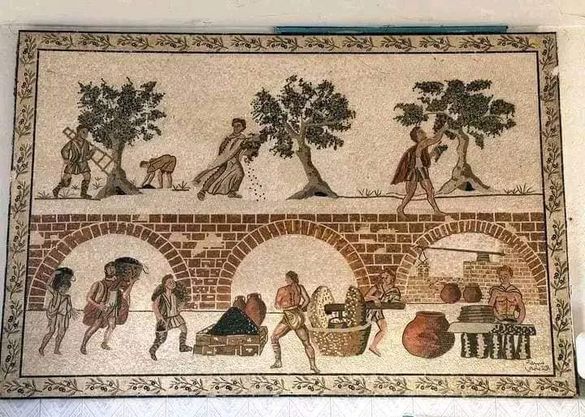Many believe that the olive tree was a foreign introduction to Tunisia, arriving only during the Roman era (Torniero, 1929). However, historical research indicates that the olive tree was introduced to the region during the Carthaginian period (Vanter, 1987).
It was the Carthaginians who first brought the olive tree to Tunisia, playing a significant role in its widespread cultivation across the land. Despite the limited number of documents, there is clear evidence pointing to the existence of vast olive groves in Carthaginian territories.
The Carthaginians’ interest in agriculture, particularly in olive cultivation, is further evidenced by the emergence of scholars like Mago. Mago authored a 28-volume work on agricultural sciences, which remains a crucial reference in agricultural economics. His work detailed methods for planting and caring for olive trees.
Greek historian Herodotus, who lived in the 5th century BCE, mentioned the presence of olive trees in northeastern Tunisia and on the island of Kerkennah, known for its vineyards and olive trees.
Archaeological evidence also supports this, with artifacts bearing olive tree motifs and agricultural tools for their care found engraved on steles in Carthage. Additionally, architectural remnants in the Marsa region reinforce the reputation of the lush Mâjra fields.
The olive groves were not confined to the outskirts of Carthage but were spread throughout various regions. The taxes collected in the form of olive oil underscore the importance of the olive tree in Carthaginian society.
Theodorus of Sicily noted that the soldiers of the King of Syracuse were astonished by the density of the olive groves they encountered when entering Tunisia from Libya and the Cap Bon region in the 4th century BCE. During the Second Punic War, Hannibal ensured that his soldiers contributed to the planting of olive trees, particularly along the coast.
Mago’s writings also highlight the exceptional care the Carthaginians devoted to the olive trees in Tunisia, mastering techniques such as grafting wild trees and cultivating robust olive plants.
This rich history of olive cultivation in Tunisia, particularly during the Carthaginian era, reveals the deep-rooted agricultural expertise that has shaped the region for centuries.











